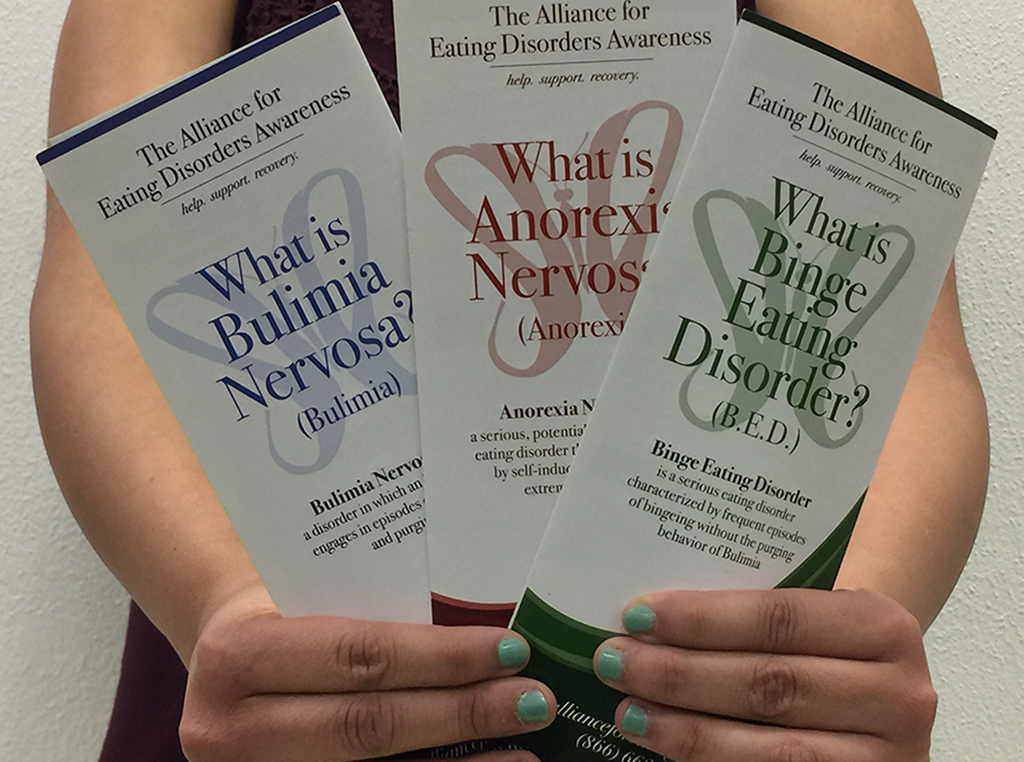I was diagnosed with an eating disorder when I was 17 years old. One of my best friends went down the same road a year later. Many girls will starve their body; throw their finger down their throat and over exercise as if their life depended on it. In those moments of my life, I felt that it did.
That was all I would think about; how to be skinnier.
Nearly one percent of American women during their lifetime will suffer from the eating disorder anorexia, a condition where people starve themselves, and 1.5 percent from bulimia, according to The National Association of Anorexia Nervosa and Associated Disorders Organization (ANAD).
Every 62 minutes at least one person dies from an eating disorder and most eating disorders are related to a mood disorder or depression, according to ANAD.
Looking back at my life I would have never expected to go through something like this. I had a good childhood, a loving and caring family, good health, friends and strong relationships and an education. You could say I was on the right track but it was quite easy to fall off track because of media images of how young women and men should look in today’s society.
I believe most girls in this day and age struggle to fit our society’s conception of an ideal appearance and work hard to attain it. The sad part is that sometimes what we see is simply unattainable for everyone. Even the models in ads and pictures do not look like their natural self most of the time, thanks to photoshop.
This happened to me my freshman-sophomore year in high school. I was never overweight; I was actually underweight and quite skinny. The problem is that I felt and thought I was not; that my appearance was not good enough.
I would look in the mirror and not be satisfied with what I saw, a brown haired young woman with an unsightly legs and arms and a flabby stomach. I was going through a phase where I convinced all my close friends and family that I was vegan and would not eat any meat, fat or sugars.
They thought I was absolutely crazy.
I would snack on celery and drink only water. The empty feeling in my stomach motivated me to continue with my unhealthy eating habits and not give up on the idea of looking perfect.
But sometimes I was not strong enough.
In “weak times” when I did eat something out of impulse and hunger I would get mad at myself and go back to the restroom to puke it up. I would then not eat anything, not even celery for the next couple of days as punishment for messing up.
As I began to get a handle on my eating disorder, I spoke with my best friend who was going through the same thing about our shared experience. As I witnessed her struggle with anorexia, I felt helpless to help her. I did listen to her a lot.
I remember she would say to me, “I just felt so shitty about myself in every way.” She also said this: “Eating disorders are not only about appearance. It’s a deeper problem. You just really dislike everything about you and sometimes the only thing you can control is your body and weight. So you attack yourself from that angle, but it gets out of control.”
She was eventually diagnosed with Anorexia Nervosa and Bulimia just like me.
We are both now in college, healthy and moving forward. But it’s a journey that we will never forget, and will never leave us. I believe anyone who has suffered from an eating disorder will never be the same again. You cannot go back to being a normal eater because you don’t see and relate to food as you did before. It is definitely a struggle for your whole life, but it’s a good learning experience to share with other young women that are going through something similar and a motivation to help prevent others from getting tangled in this mess.
I now believe the primary cause of eating disorders is the media and the ideal that it conveys about the ideal women’s body. We are bombarded everyday with pictures in magazines, videos and TV ads of how women should look like or aspire to look like. What is truly sad is these images are not realistic and not attainable. Deep down we are all aware of this. Yet we still try to attain the goal.
Until our society and the media rids itself these unrealistic standards of beauty, girls and women will always be at risk of eating and mental disorders.
Teenagers are not at fault for trying to fit in and be accepted; we all want to be accepted and loved. But starving yourself is not the way to do it. We need to teach this lesson early on to girls and young women because it is unlikely that media will stop promoting these images.
But we can definitely help girls and young women understand that the media images are false, and teach them to love themselves early on no matter what her appearance.
Talk therapy and education are a must to help combat the problem. Talking to a therapist is not a sign of weakness. Rather it helps provide a path to regaining your health and mental well being.

